At the Agricultural Genetics Institute, the laboratories are so cold that you have to wear a coat in the middle of summer. On the shelves are a jumble of sample tubes containing genetic material from rice, corn, potatoes, vegetables... - part of the national treasure of more than 32,000 plant genetic resources.
Each test tube is a “seed” of knowledge, symbolizing the 80-year journey of the agricultural industry from dependence to self-reliance, from manual selection to genetic technology, from food security to national biosecurity.
Seed self-sufficiency is the foundation of any sustainable agriculture. Because when seeds are in the hands of others, food security, the environment and the market are vulnerable. After the war, Vietnam had to import most of its rice, corn, vegetable and fruit seeds.
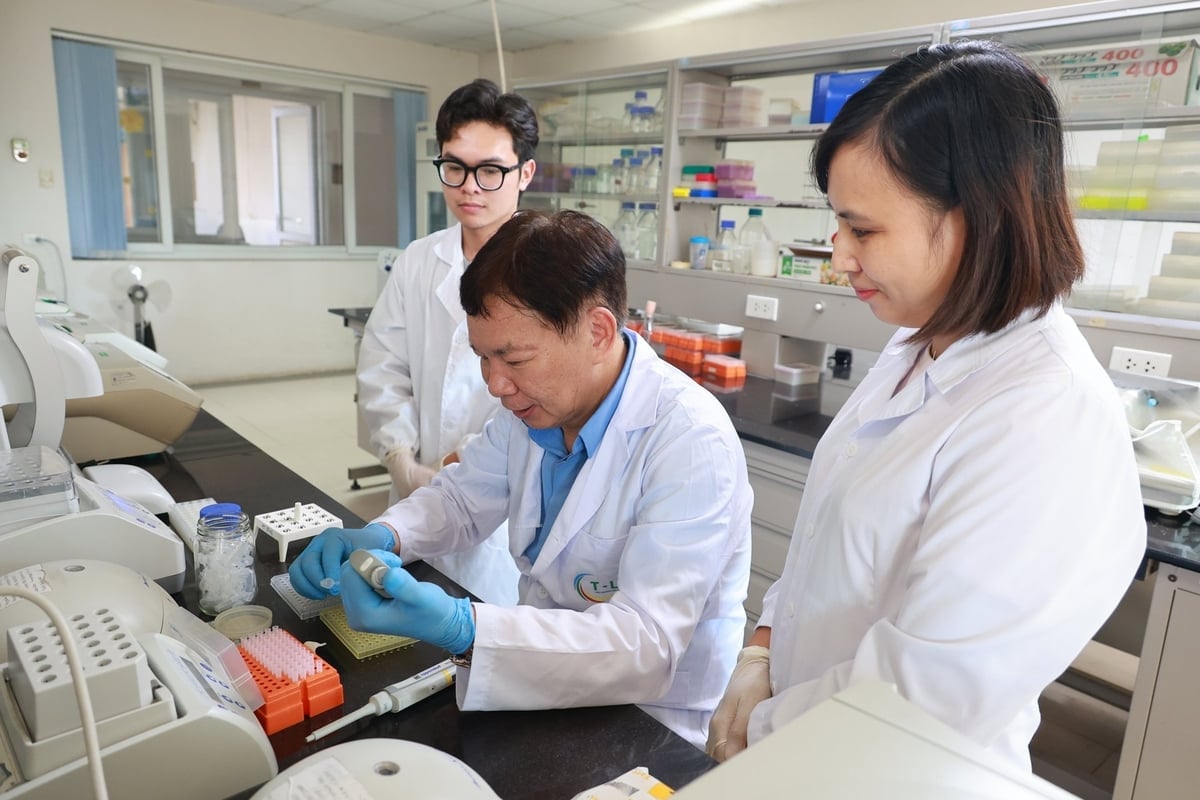
Former Director of the Institute of Agricultural Genetics Pham Xuan Hoi (center) at the laboratory. Photo: Nguyen Chuong.
In the 1980s, the proportion of domestic varieties accounted for only about 10-15% of the demand. Domestic research institutes mainly propagated by traditional selection methods, with low productivity and not well adapted to harsh climate conditions. But within just 3 decades, with the continuous efforts of scientists and businesses, Vietnam has become one of the few Southeast Asian countries that is almost completely self-sufficient in key crop varieties.
According to the Department of Crop Production and Plant Protection, there are currently more than 260 rice varieties, 70 corn varieties, 50 vegetable, bean, industrial crop and fruit tree varieties selected and bred by Vietnam that have been recognized for circulation, accounting for more than 80% of the country's cultivated area. Rice varieties such as ST24, ST25, OM18, Dai Thom 8, OM5451 or RVT are all bred by Vietnamese scientists, have high productivity, and rice quality meets export standards to the EU and Japan.
In the field of vegetables, the Fruit and Vegetable Research Institute has successfully created many heat-resistant varieties of tomatoes, melons, cabbages... With fruit trees, the Southern Fruit Institute has successfully asexually propagated mangoes, durians, dragon fruits... with high productivity and good disease resistance.
This transformation is the result of a step forward in thinking. While in the past research was often separated from practice, now institutes, schools and businesses have been closely linked into a network of innovation.
In the Mekong Delta, the cooperation program between the Mekong Delta Rice Research Institute and seed enterprises has helped shorten the seedling creation time from 8-10 years to 3-4 years thanks to the application of biotechnology. In Lam Dong , tissue culture rooms for orchids, strawberries, and potatoes are fully automated, providing more than 40 million disease-free seedlings each year. These small laboratories have changed the landscape of the seed market - a field that used to be a bottleneck in the agricultural sector.
At present, breeding is no longer an economic issue but a national biosecurity issue. Climate change, new pests and the need to reduce emissions are forcing the crop industry to have crop varieties that are well adapted, disease-resistant and use less resources. Projects such as “Creating salt-tolerant rice in coastal areas”, “Drought-resistant corn varieties in the Central Highlands” or “Fruit tree varieties for harsh climates” are key projects of the Vietnam Academy of Agricultural Sciences.
In laboratories, scientists have succeeded with molecular selection and gene editing techniques to quickly identify desired traits, creating new generations of varieties without going through dozens of traditional crosses.

Seed samples kept at the Institute of Agricultural Genetics. Photo: Tung Dinh.
The Government also considers genetic technology a strategic breakthrough for the next decade. Decision No. 150/QD-TTg of the Prime Minister approving the Strategy for Sustainable Agricultural and Rural Development for the 2021-2030 period, with a vision to 2050, clearly states: Developing technology for selecting and breeding key crops and livestock; proactively utilizing valuable genetic resources; forming a national genetic data bank...
These orientations are gradually taking shape in practice. To date, the Agricultural Genetics Institute has preserved over 10,000 genetic samples and is cooperating with FAO, IRRI... to share global crop genetic data. The Plant Resources Center's deep-freeze storage system is one of the most modern facilities in Southeast Asia, ensuring the storage of varieties for 50-100 years.
Seed autonomy also paves the way for trade initiative. When no longer dependent on foreign seed sources, businesses can proactively produce and replicate according to the needs of each ecological region. Domestic companies such as Vinaseed, Thaibinh Seed, Southern Seed or Vinamit have invested heavily in gene analysis, crossbreeding and quality control technology. Many new strains and varieties are not only used domestically but also exported to Cambodia, Myanmar, the Philippines... Vietnam is gradually entering the group of countries capable of exporting plant varieties instead of just importing as before.
Technology has also changed the way of breeding. In many localities, rapid propagation of fruit trees, flowers, and vegetables by tissue culture has become popular, completely replacing the traditional cutting and grafting methods. In Bac Ninh and Lam Dong, automatic greenhouse breeding systems controlled by temperature and humidity sensors help reduce the risk of disease by 70%, doubling the survival rate of plants. Clean seed production centers not only serve mass production but also act as biological buffer zones, ensuring the safety of gene sources when pests break out.
Plant varieties also act as a shield to protect the ecosystem. When plants are healthy, the soil needs less chemicals, farmers are less dependent on pesticides, and the field ecosystem is restored. From there, biosecurity (the ability to protect the natural balance and avoid invasion by alien organisms) is strengthened.
Despite the achievements, challenges remain. The rapid development of biotechnology requires a more stringent legal framework on intellectual property, biosafety and seed commercialization. Investment in research remains low compared to its potential. But the steady progress made over the past 10 years shows that the crop industry is on the right track, developing based on knowledge rather than just experience.
Source: https://nongnghiepmoitruong.vn/giong-cay-trong-tu-nut-that-den-vi-the-quoc-gia-d783006.html












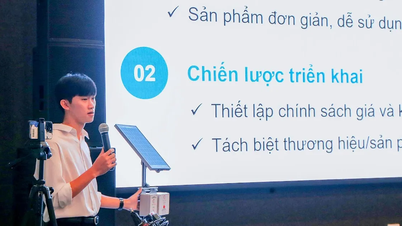

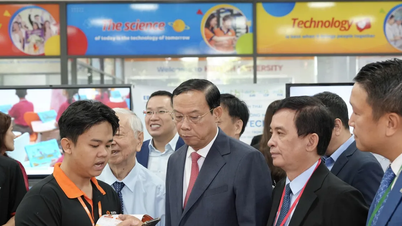
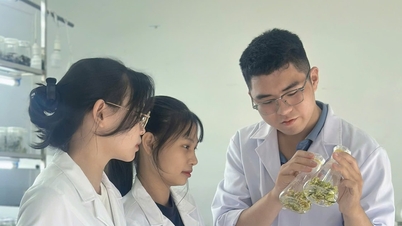



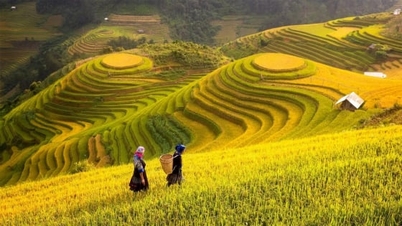


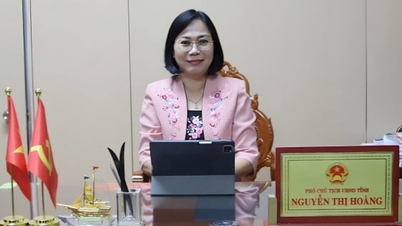









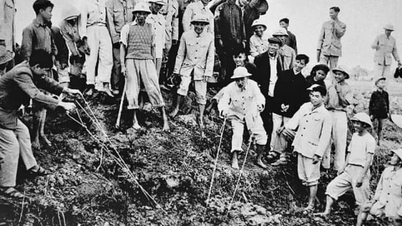

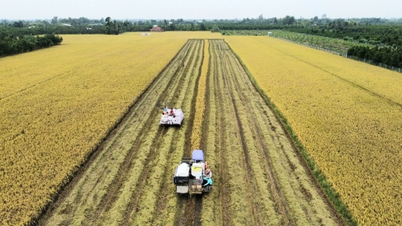






















































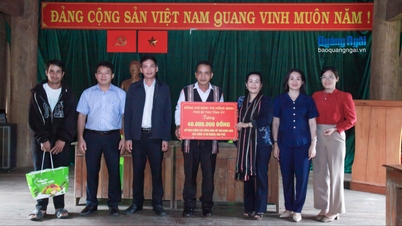





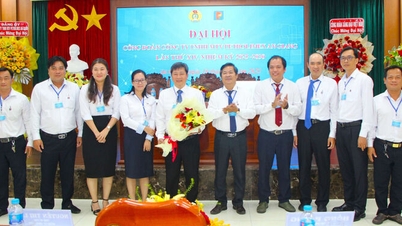



![Dong Nai OCOP transition: [Article 3] Linking tourism with OCOP product consumption](https://vphoto.vietnam.vn/thumb/402x226/vietnam/resource/IMAGE/2025/11/10/1762739199309_1324-2740-7_n-162543_981.jpeg)









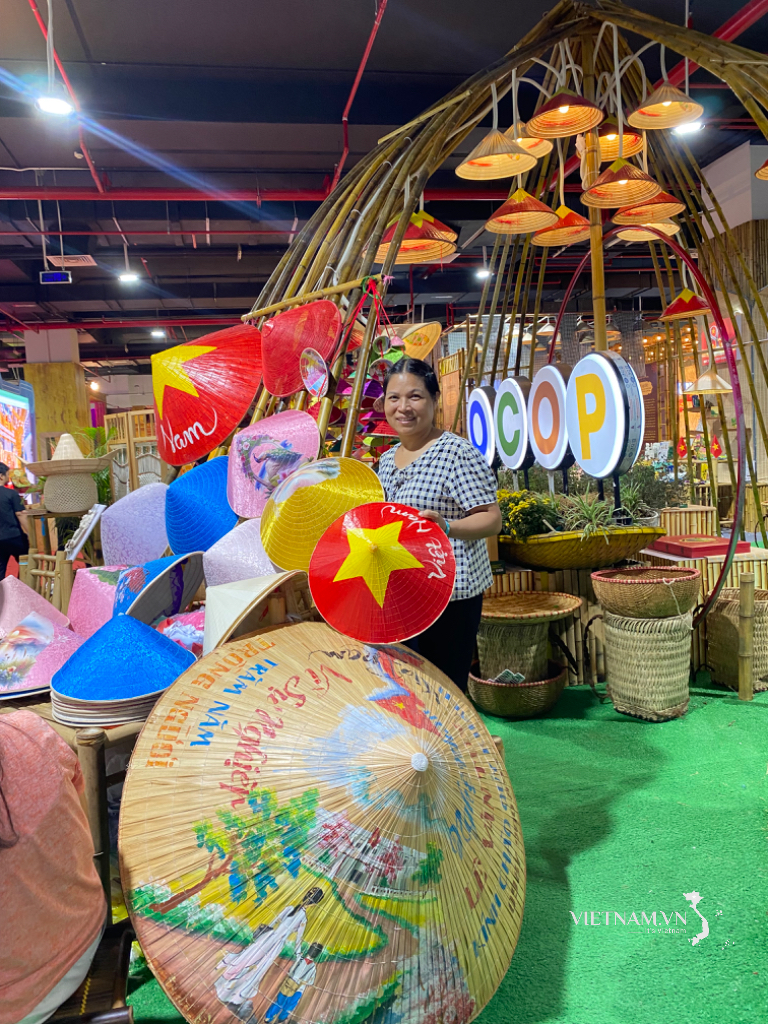


Comment (0)